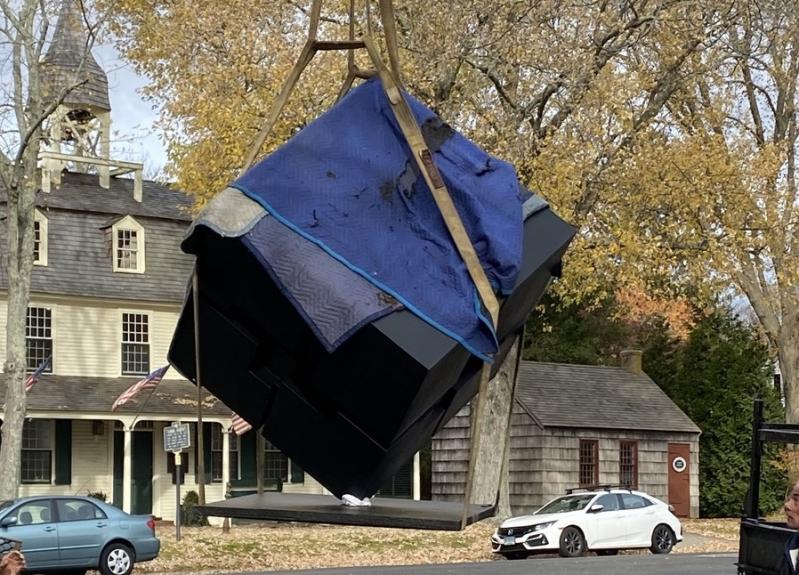For more than 50 years, "Alamo," Tony Rosenthal's 15-foot-tall Cor-Ten steel sculpture that pivots on its axis, has been as much as part of its Astor Place neighborhood in Lower Manhattan as the Cooper Union. Indeed, after a three-month absence last summer for refurbishment, its return landed it on the cover of The New Yorker's Nov. 6 issue, courtesy of a rendering by Jorge Colombo.
Rosenthal's "Cube 72," a 90-inch-square, or half-size version of "Alamo," was given by the artist to Guild Hall and installed in front of the building in 1972, the same year the artist moved to Springs with his first wife, Halina Kolowicz.
"Cube 72" cropped up in The New York Times in July 1989 in connection with an article on East Hampton Village's ban on outdoor displays of art within its historic district. When Guild Hall's permits expired for the display of two other sculptures, one by William King and one by Albert Price, the village's design review board invoked the ban.
However, because "Cube 72" had been in place before the historic district was delineated, it was not affected by the sanction. And there it remained, a Main Street landmark, until it was moved to Guild Hall's sculpture garden.
As of last week, however, "Cube 72" is once again tilting proudly in front of Guild Hall, thanks in large part to the efforts of Dave Petrie, the C.E.O. of Tony Rosenthal Art.
How Mr. Petrie, who was in the military until two years ago, ascended to that position is a story in itself. "Tony married my sister-in-law, Cynthia Rosenthal, in 1999," he explained during a phone conversation. "I knew Tony from 1995 until he died in 2009."
After Mr. Petrie left the military, Rosenthal's widow asked him to help manage the day-to-day affairs of the artist's estate. "I took it on because I wanted to revive Tony's legacy," he said.
Rosenthal's 70-year career launched in 1939 when his first large-scale work was created for the Elgin Watch Company building at the New York World's Fair. Over the years, five of his public sculptures were sited in Manhattan, and dozens of others were placed in Los Angeles, Philadelphia, and other cities. However, despite a vast audience, he was never as prominent as some of his art world peers.
When "Alamo" wasn't able to spin, Mr. Petrie contacted New York City's Department of Transportation and, after a long negotiation, agreed that the estate would underwrite the cost of and manage its restoration, with the condition that it be exhibited at last summer's Hamptons Fine Art Fair in Southampton -- which it was, before being returned to Astor Place.
Last June Mr. Petrie got in touch with Andrea Grover, Guild Hall's executive director, who told him "Cube 72" was in disrepair. After seeing it, he told her the Rosenthal estate would like "to bring it back to its spinning glory" if it could be reinstalled in front of Guild Hall. The museum received the village's approval, and the restoration was done at Liberty Ironworks in Southampton. Installed last week, the sculpture will remain in place for six months.




